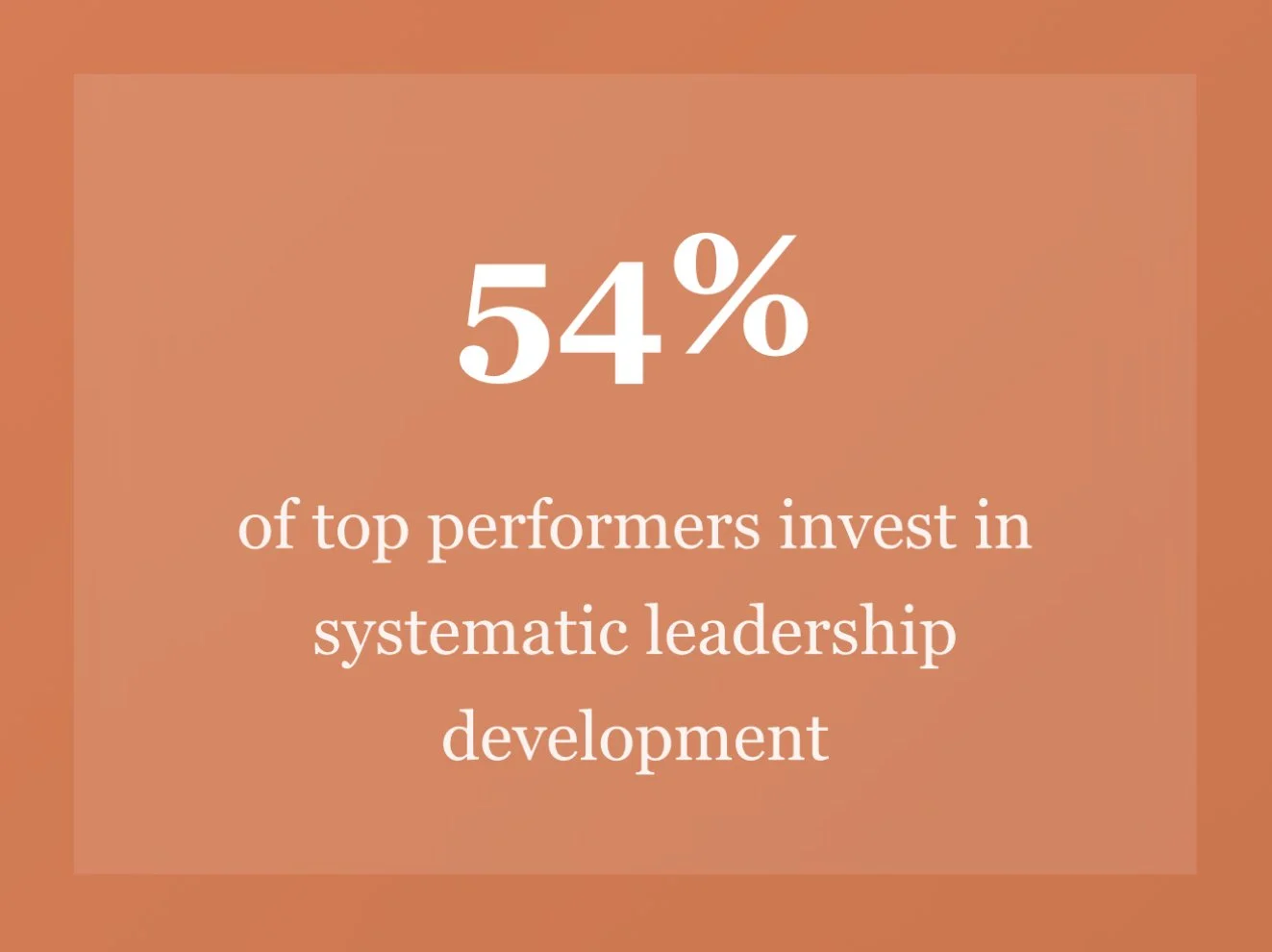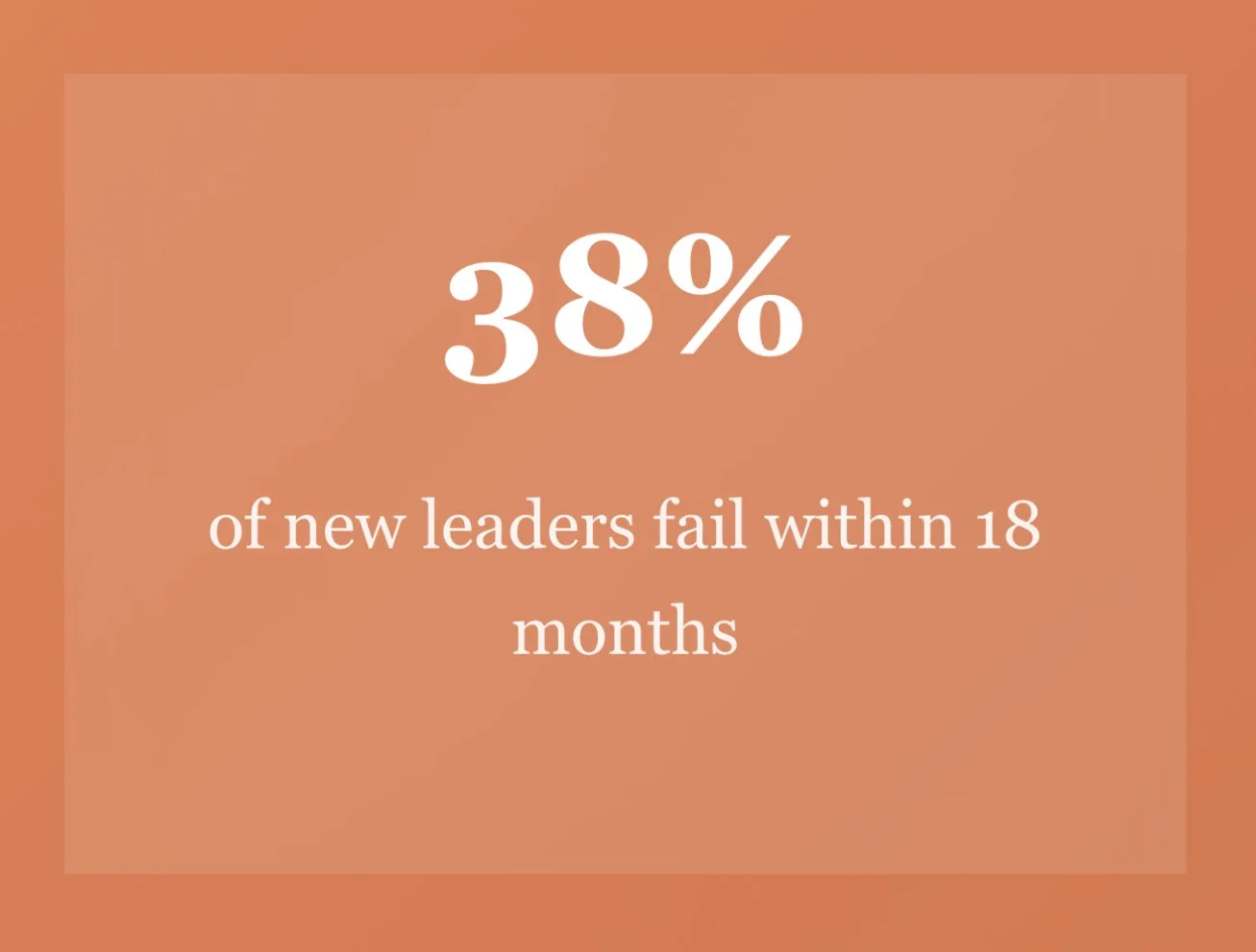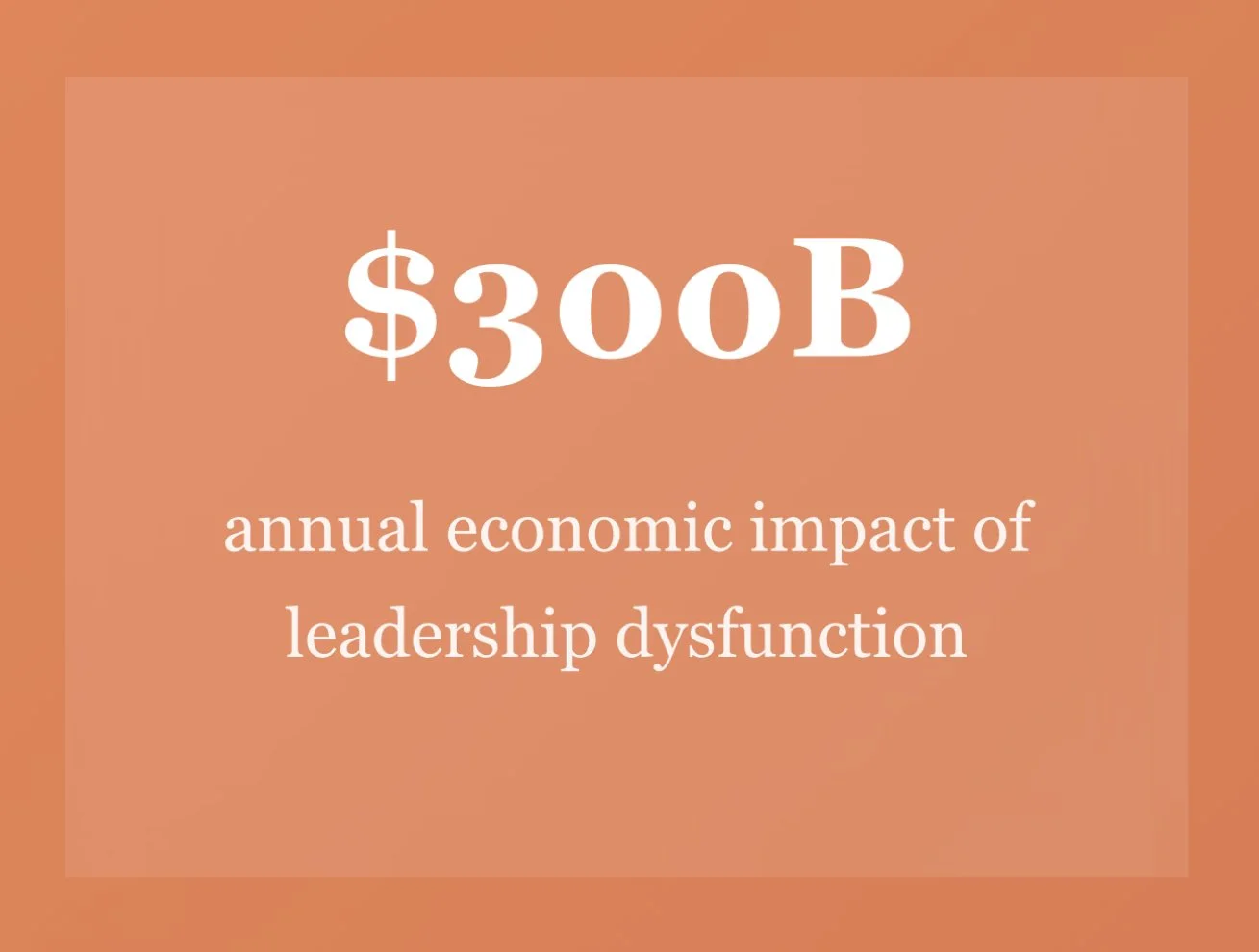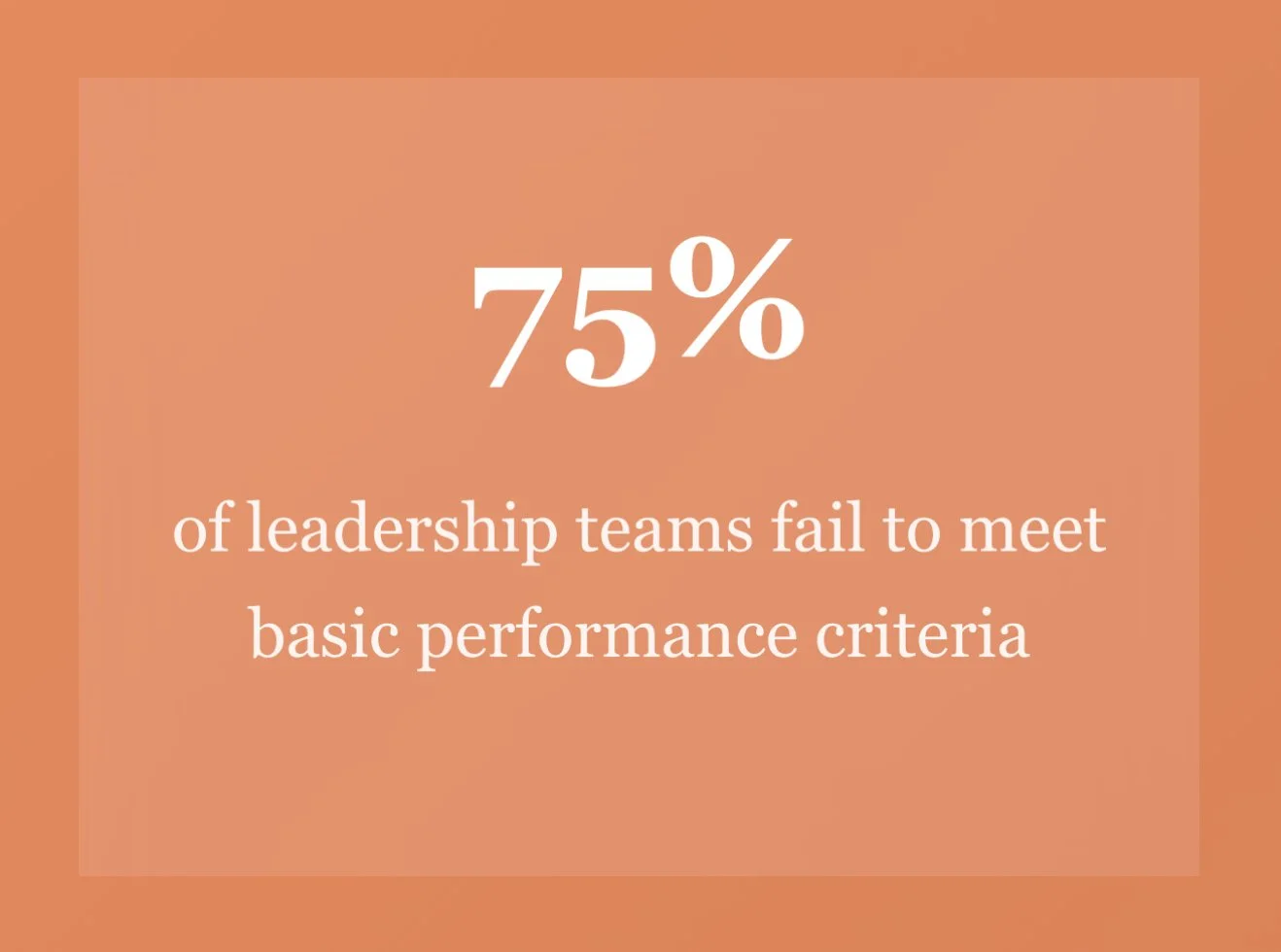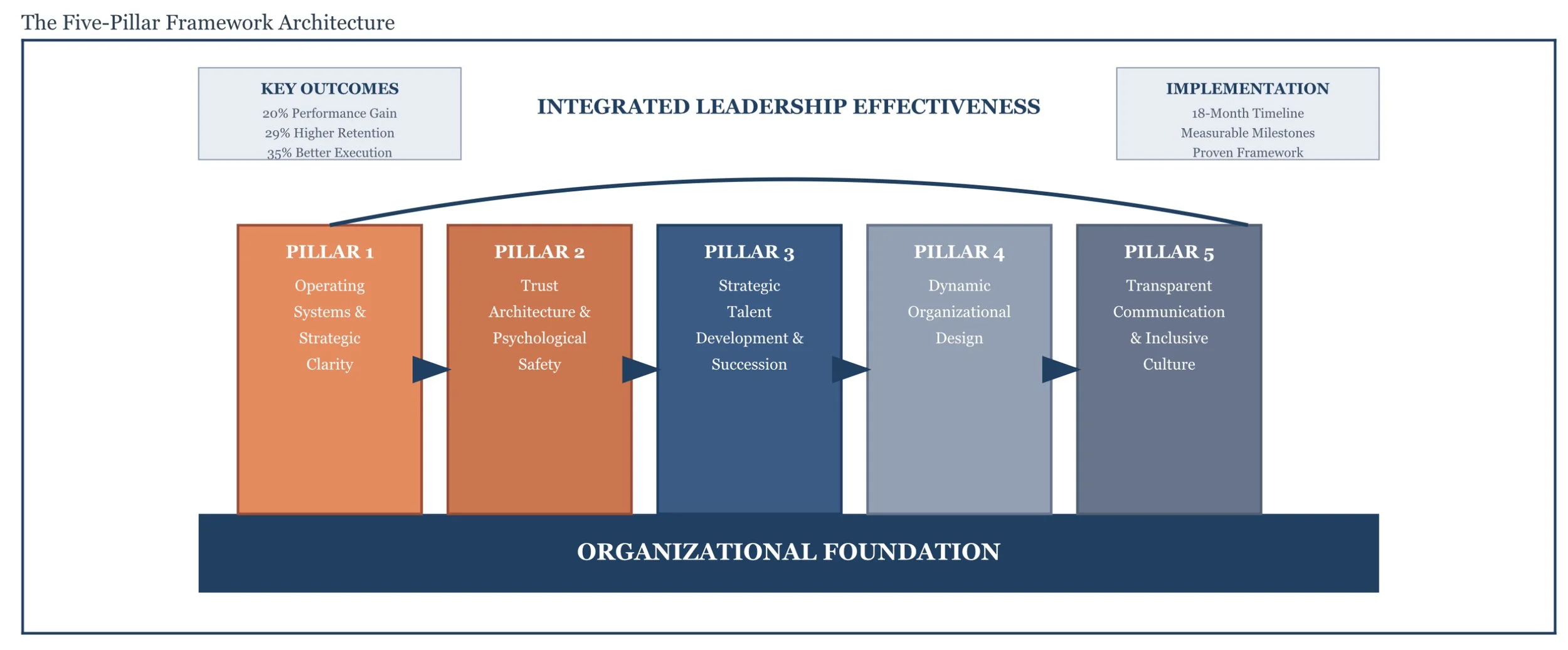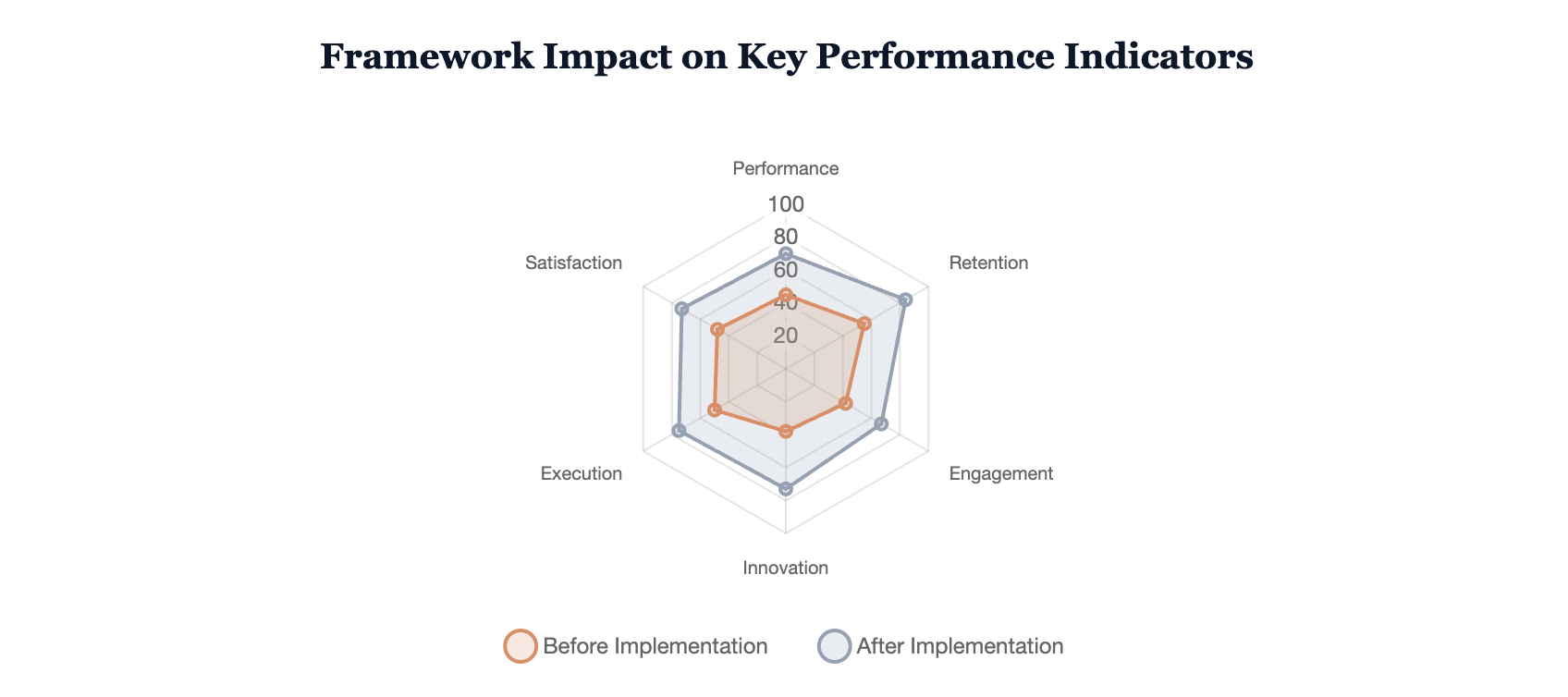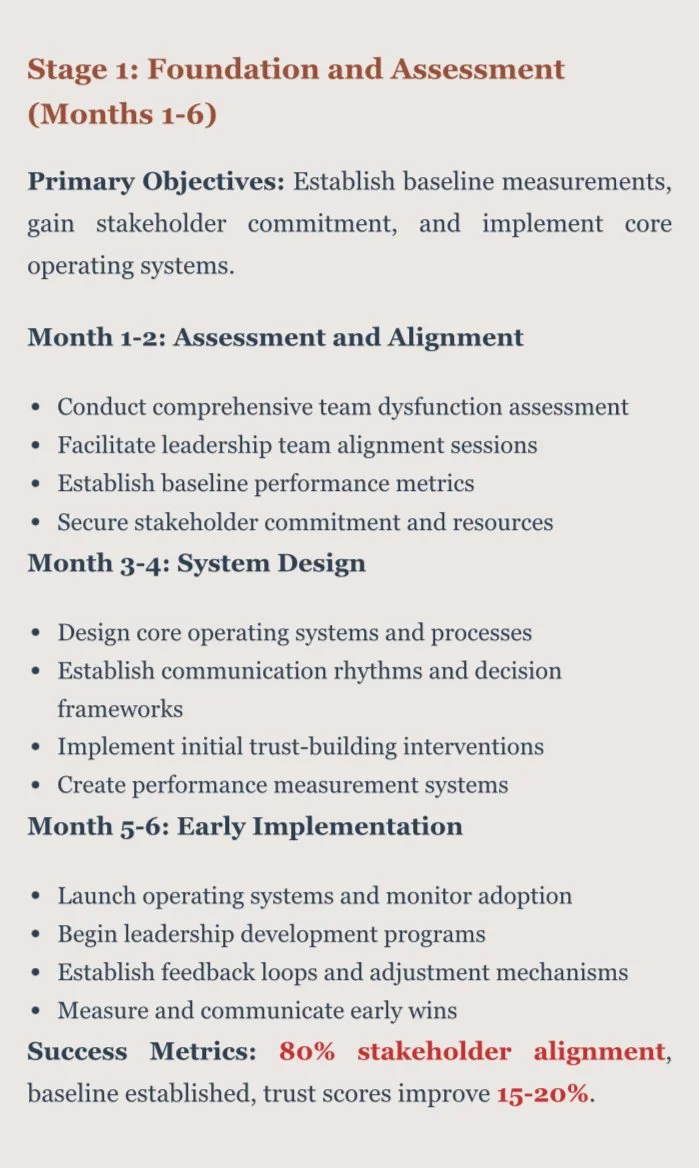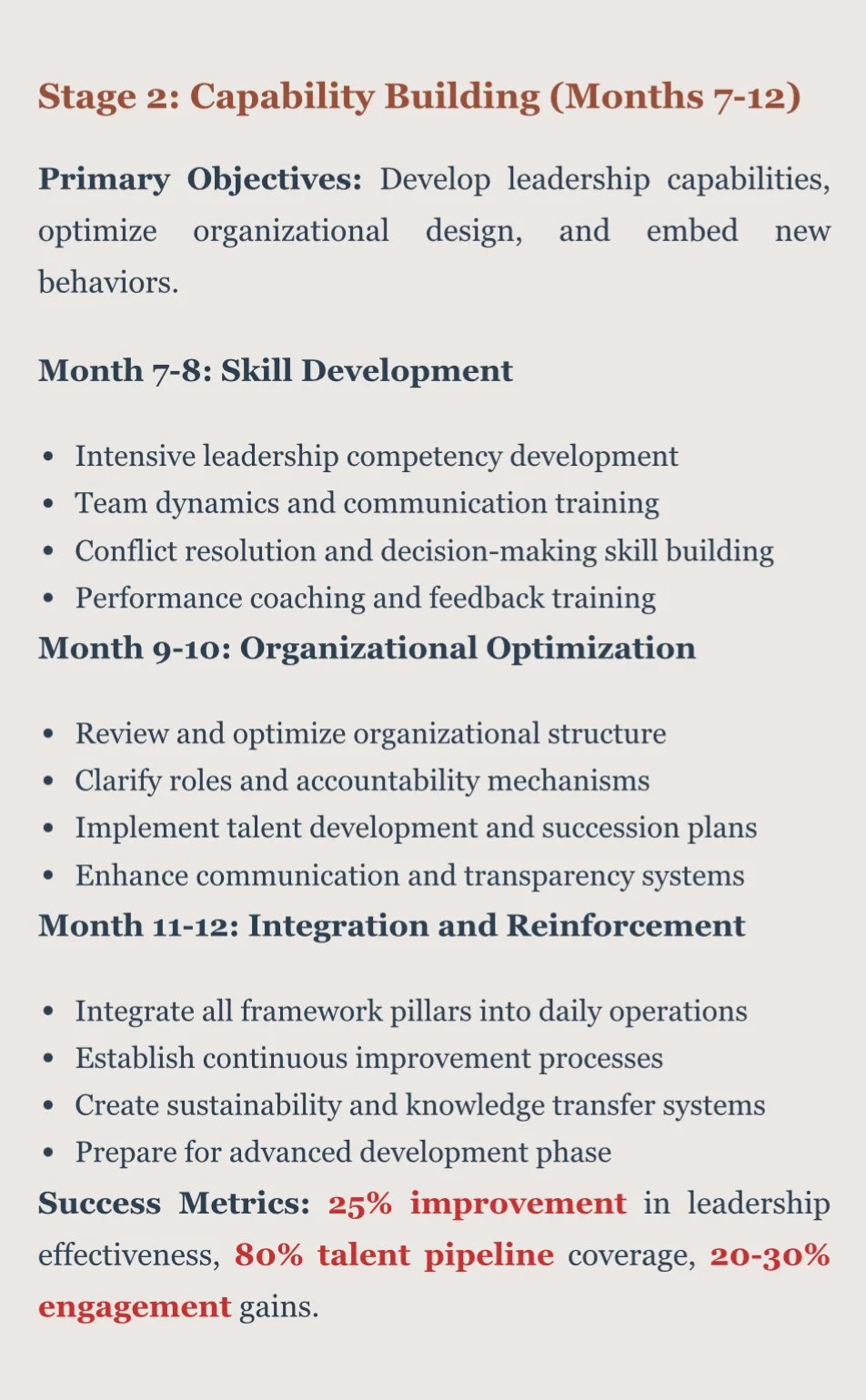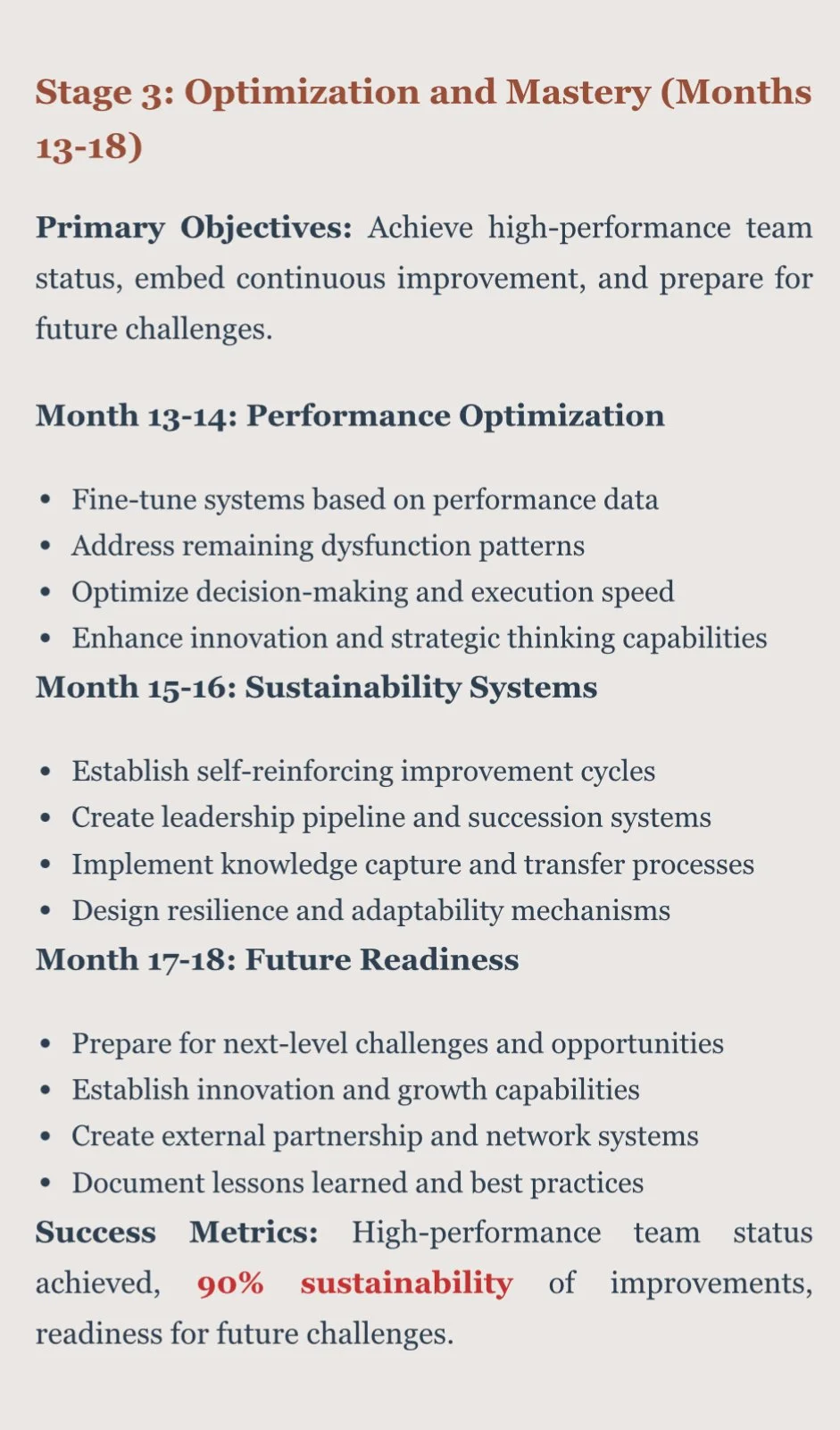Building Functional Leadership Teams: A Strategic Framework for Modern Organizations
Evidence-Based Strategies for Overcoming Leadership Team Dysfunction and Driving Organizational Performance
Executive Summary
Leadership team dysfunction is the silent killer of organizational performance. Research consistently shows that 75% of leadership teams fail to meet basic performance criteria, yet organizations with functional leadership teams outperform competitors by 20% and report 29% higher employee retention.
The dysfunction follows predictable patterns. Whether in Silicon Valley startups or traditional manufacturing companies, leadership teams fall into three main dysfunction types: competitive infighting environments ("shark tanks"), conflict-avoidant cultures ("petting zoos"), and complacent performance plateaus ("mediocracies").
A systematic solution exists. Our five-pillar framework addresses the root causes of team dysfunction while building sustainable high-performance capabilities. Organizations implementing this approach see measurable improvements within 6 months and achieve high-performance team status within 18 months.
Implementation is both urgent and achievable. With clear methodologies, proven tools, and structured timelines, any organization can transform dysfunctional leadership teams into competitive advantages. The question is not whether to act, but how quickly you can begin.
The Leadership Dysfunction Crisis
Leadership team dysfunction represents one of the most pervasive yet overlooked challenges in modern business. Despite billions invested in leadership development, only 40% of leaders are rated as high quality by their teams, and 71% of organizations lack confidence in their leaders' ability to navigate future challenges.
The Implementation Gap
While 83% of organizations acknowledge the importance of leadership development, only 5% have implemented effective programs. This massive gap between recognition and action represents the core challenge facing modern enterprises.
The economic impact is staggering. Workplace stress—largely attributed to poor leadership—costs organizations $300 billion annually through reduced productivity, healthcare costs, and turnover. Meanwhile, 65% of leaders experience burnout symptoms, creating a downward spiral that affects entire organizations.
The Three Universal Dysfunction Patterns
Regardless of industry, size, or culture, dysfunctional leadership teams fall into three predictable patterns:
The Shark Tank (35% of dysfunctional teams): Characterized by internal competition and political maneuvering. Team members excel individually but struggle with collective decision-making. Common in high-pressure, results-driven environments.
The Petting Zoo (40% of dysfunctional teams): Marked by conflict avoidance and artificial harmony. Teams prioritize relationships over results, leading to delayed decisions and unclear accountability. Often found in consensus-driven or relationship-focused cultures.
The Mediocracy (25% of dysfunctional teams): Defined by complacency and resistance to change. Teams maintain acceptable performance but lack innovation and growth capability. Typically emerges in stable, established organizations.
Leadership Team Dysfunction Patterns
Quick Assessment: Identify Your Team's Pattern
Shark Tank Indicators: Frequent disagreements, competition for resources, individual heroes, blame culture
Petting Zoo Indicators: Lack of healthy debate, surface-level harmony, unclear decisions, conflict avoidance
Mediocracy Indicators: Comfortable with status quo, risk aversion, slow decision-making, limited innovation
The Five-Pillar Framework for Functional Leadership Teams
Based on analysis of high-performing leadership teams across industries and regions, we present a comprehensive framework that addresses the root causes of dysfunction while building sustainable competitive advantages.
Pillar 1: Foundational Operating Systems and Strategic Clarity
The Challenge: Most leadership teams lack consistent frameworks for decision-making, goal-setting, and execution.
The Solution: Implement company-wide operating systems that provide structure while maintaining flexibility.
Implementation Checklist:
Establish clear strategic planning processes with quarterly reviews
Define decision-making authority and escalation paths
Create consistent goal-setting frameworks (OKRs, KPIs, etc.)
Document and communicate core values and operating principles
Implement regular operating reviews and course-correction mechanisms
Expected Outcome: 83% higher alignment between strategic objectives and daily operations within 90 days.
Pillar 2: Trust Architecture and Psychological Safety
The Challenge: Absence of trust creates fear, limiting honest communication and collaborative decision-making.
The Solution: Systematically build trust through vulnerability, productive conflict, and commitment processes.
Implementation Checklist:
Conduct team profiling exercises to understand working styles
Establish "failure celebration" practices to encourage risk-taking
Create structured conflict resolution processes
Implement regular team retrospectives and improvement sessions
Develop clear accountability mechanisms and follow-through systems
Expected Outcome: Teams with high trust are 2.5 times more likely to be high-performing and experience 50% lower turnover.
Pillar 3: Strategic Talent Development and Succession
The Challenge: Organizations often promote individual contributors without developing leadership capabilities.
The Solution: Create comprehensive talent pipelines with intentional leadership development at all levels.
Implementation Checklist:
Map critical leadership roles and succession plans
Establish competency-based hiring and promotion criteria
Create mentoring and coaching programs
Implement 360-degree feedback and development planning
Design stretch assignments and cross-functional experiences
Expected Outcome: Organizations with effective leadership development are 4.2 times more likely to outperform competitors.
Pillar 4: Dynamic Organizational Design
The Challenge: Rigid organizational structures limit agility and accountability.
The Solution: Design adaptive structures that optimize for both efficiency and innovation.
Implementation Checklist:
Regularly review organizational design for strategic alignment
Clarify roles, responsibilities, and authority levels
Establish cross-functional teams for key initiatives
Create clear escalation and decision-making processes
Design performance metrics that drive desired behaviors
Expected Outcome: Organizations that optimize structures report 25% faster strategy execution and 30% higher employee engagement.
Pillar 5: Transparent Communication and Inclusive Culture
The Challenge: Information silos and exclusive practices limit organizational learning and engagement.
The Solution: Create transparent communication systems that promote inclusion and shared learning.
Implementation Checklist:
Establish regular all-hands communication rhythms
Create transparent decision-making and communication processes
Implement diversity and inclusion initiatives
Design employee wellbeing and support programs
Develop crisis communication capabilities
Expected Outcome: Organizations with inclusive leadership teams are 35% more likely to outperform industry peers.
18-Month Implementation Roadmap
Successful leadership team transformations follow a structured approach that builds momentum while maintaining operational effectiveness. This roadmap provides a proven pathway from dysfunction to high performance.
Critical Success Factors
Leadership Commitment
CEO and senior leadership must actively participate and model desired behaviors. 92% of successful transformations feature visible, consistent leadership engagement throughout the process.
External Facilitation
Objective third-party facilitation accelerates progress and manages sensitive dynamics. 85% of successful transformations utilize external expertise to navigate complex team issues.
Measurement and Adjustment
Continuous measurement enables real-time optimization and demonstrates progress. Organizations with robust measurement systems are 3.2 times more likely to achieve transformation goals.
Essential Tools and Resources
Assessment and Diagnostic Tools
Leadership Team Functionality Assessment
Purpose: Comprehensive evaluation of all five framework pillars
Components: 50-point assessment, 360-degree feedback, dysfunction pattern identification
Timeline: Initial assessment (2 weeks), quarterly reviews (ongoing)
Expected Outcome: Clear baseline and improvement tracking
Trust and Communication Diagnostic
Purpose: Measure trust levels and communication effectiveness
Components: Team trust survey, communication analysis, conflict style assessment
Timeline: Monthly pulse surveys, quarterly deep dives
Expected Outcome: Targeted trust-building interventions
Development and Training Resources
Leadership Competency Development Program
Purpose: Build essential leadership capabilities across all levels
Components: Modular training, coaching, peer learning, action projects
Timeline: 6-month intensive program, ongoing development
Expected Outcome: 28% improvement in leadership effectiveness
Team Facilitation and Coaching Toolkit
Purpose: Enable internal facilitation and continuous improvement
Components: Facilitation guides, coaching frameworks, intervention techniques
Timeline: Train-the-trainer approach over 3 months
Expected Outcome: Self-sustaining improvement capabilities
Technology and Measurement Platforms
Performance Dashboard and Analytics
Purpose: Real-time monitoring of leadership team effectiveness
Components: KPI tracking, trend analysis, predictive insights
Timeline: Implementation in month 2, ongoing optimization
Expected Outcome: Data-driven decision making and course correction
Communication and Collaboration Platform
Purpose: Enable transparent communication and knowledge sharing
Components: Document sharing, project tracking, communication tools
Timeline: Launch in month 1, continuous enhancement
Expected Outcome: Improved transparency and collaboration
Measuring Success: Key Performance Indicators
Leading Indicators (Monthly Tracking)
Team Trust Score: Target 20% improvement by month 6
Decision-Making Speed: 30% faster consensus achievement
Communication Effectiveness: Measured through feedback surveys
Conflict Resolution Time: Reduction in time to resolve disagreements
Meeting Effectiveness: Quality and productivity metrics
Lagging Indicators (Quarterly Tracking)
Employee Engagement: Target 25% improvement
Leadership Effectiveness Rating: 360-degree feedback scores
Organizational Performance: Revenue, productivity, quality metrics
Talent Retention: Especially high-potential employees
Innovation Metrics: New ideas generated and implemented
Business Impact Indicators (Annual Tracking)
Financial Performance: Revenue growth, profitability, efficiency
Market Position: Competitive advantage and market share
Customer Satisfaction: Loyalty and advocacy metrics
Organizational Resilience: Ability to adapt to challenges
Sustainability Metrics: Long-term viability and growth
Expected ROI Timeline
6 Months: Initial improvements visible in trust and communication
12 Months: Measurable performance gains and engagement improvements
18 Months: Sustained competitive advantage and high-performance status
Ongoing: Compounding benefits and organizational resilience
Global Leadership Indicators: Benchmarking Your Organization
Understanding where your leadership team stands relative to global benchmarks is essential for setting realistic goals and measuring progress. These indicators provide universal standards that transcend industry boundaries and geographic locations.
Global Leadership Indicators: Benchmarking Your Organization
Understanding where your leadership team stands relative to global benchmarks is essential for setting realistic goals and measuring progress. These indicators provide universal standards that transcend industry boundaries and geographic locations.
Tier 1: World-Class Leadership Teams (Top 10%)
Performance Benchmarks
Trust Score: 85%+ team members report high trust in leadership
Decision Speed: Strategic decisions made within 2-4 weeks
Employee Engagement: 80%+ engagement scores consistently
Talent Retention: <5% annual turnover of high-potential employees
Innovation Rate: 20%+ revenue from products/services launched in past 3 years
Behavioral Indicators
Healthy Conflict: Regular, productive debates with quick resolution
Transparency: Open sharing of both successes and failures
Accountability: Clear ownership and follow-through on commitments
Learning Agility: Rapid adaptation to market changes and feedback
Cultural Alignment: Values demonstrated consistently in decisions and actions
Tier 2: High-Performing Teams (Top 25%)
Performance Benchmarks
Trust Score: 70-84% team members report good trust levels
Decision Speed: Strategic decisions made within 4-6 weeks
Employee Engagement: 65-79% engagement scores
Talent Retention: 5-10% annual turnover of high-potential employees
Innovation Rate: 10-19% revenue from recent innovations
Tier 3: Average Performance (25th-75th Percentile)
Performance Benchmarks
Trust Score: 50-69% team members report moderate trust
Decision Speed: Strategic decisions take 6-12 weeks
Employee Engagement: 45-64% engagement scores
Talent Retention: 10-20% annual turnover of high-potential employees
Innovation Rate: 5-9% revenue from recent innovations
Tier 4: Underperforming Teams (Bottom 25%)
Warning Signs
Trust Score: <50% team members report trust in leadership
Decision Speed: Strategic decisions take >12 weeks or stall indefinitely
Employee Engagement: <45% engagement scores
Talent Retention: >20% annual turnover of high-potential employees
Innovation Rate: <5% revenue from recent innovations
Universal Success Indicators (Regardless of Culture or Industry)
Monthly Assessment Checklist:
Meeting Quality: Productive discussions with clear outcomes and action items
Information Flow: Key information reaches all relevant stakeholders promptly
Conflict Resolution: Disagreements addressed constructively within 1-2 weeks
Commitment Follow-Through: >90% of commitments met on time
Cross-Functional Collaboration: Smooth coordination across departments
Quarterly Assessment Checklist:
Strategic Alignment: All team members can articulate shared vision and priorities
Performance Gaps: Underperformance addressed quickly with clear improvement plans
Succession Readiness: Clear development paths for 80%+ of critical roles
Innovation Pipeline: Regular flow of new ideas and improvement initiatives
Stakeholder Confidence: Strong support from board, investors, and key customers
Global Trends Impacting Leadership Effectiveness
Digital Transformation Readiness
Global Context: 70% of organizations worldwide are accelerating digital initiatives
Leadership Indicator: Team demonstrates comfort with technology adoption and digital-first thinking
Action Step: Assess your team's digital fluency and invest in technology leadership development
Remote Work Effectiveness
Global Context: 28% of workforce operates remotely, with hybrid models becoming standard
Leadership Indicator: Team maintains effectiveness across virtual and in-person interactions
Action Step: Develop virtual leadership capabilities and digital collaboration protocols
Sustainability and Purpose
Global Context: 83% of employees expect organizations to have clear environmental and social commitments
Leadership Indicator: Team integrates sustainability and purpose into strategic decisions
Action Step: Align leadership team around sustainability goals and stakeholder value creation
Diversity and Inclusion
Global Context: Organizations with diverse leadership teams are 35% more likely to outperform peers
Leadership Indicator: Team demonstrates inclusive decision-making and diverse representation
Action Step: Audit leadership team composition and implement inclusive leadership practices
Quick Global Benchmark Assessment
Rate Your Team (1-5 scale) on These Universal Indicators:
Trust and Psychological Safety: Team members speak openly about challenges and mistakes
Decision-Making Speed: Decisions are made efficiently without excessive delays
Strategic Clarity: Everyone understands and can communicate organizational priorities
Accountability Culture: Team members hold each other responsible for commitments
Innovation Mindset: Team actively seeks improvement opportunities and embraces change
Stakeholder Orientation: Decisions consider impact on all stakeholders, not just shareholders
Learning Agility: Team adapts quickly to new information and changing circumstances
Cultural Inclusivity: All voices are heard and valued in team discussions
Scoring Guide:
32-40 points: World-class leadership team (Top 10%)
26-31 points: High-performing team (Top 25%)
18-25 points: Average performance (improvement opportunities exist)
Below 18 points: Significant dysfunction requiring immediate intervention
Implementation Priority
Based on global leadership research, organizations should prioritize framework implementation in this order: 1) Trust and psychological safety, 2) Strategic clarity and alignment, 3) Decision-making processes, 4) Accountability systems, 5) Innovation and learning capabilities.
The Path Forward: From Dysfunction to Competitive Advantage
The evidence is clear: functional leadership teams represent the single most important factor in organizational success, yet the majority of teams operate at dysfunctional levels. This represents both a crisis and an unprecedented opportunity for organizations willing to invest in systematic leadership team development.
The five-pillar framework provides a proven pathway to transformation, supported by concrete tools, measurable milestones, and a structured 18-month implementation roadmap. Organizations that commit to this journey consistently achieve remarkable results: improved performance, higher engagement, and sustainable competitive advantages.
The transformation requires courage and commitment. Leaders must be willing to confront uncomfortable truths about team dynamics while modeling the vulnerability and growth mindset essential for sustainable change. The framework provides structure while requiring authentic human connection and continuous learning.
The cost of inaction continues to compound. Every month of leadership team dysfunction represents lost opportunities, diminished employee engagement, and competitive disadvantage. The economic impact—$300 billion annually—reflects the magnitude of this crisis and the potential for organizations that act decisively.
Success is achievable for any committed organization. Regardless of industry, size, or current performance level, the framework provides a systematic approach to building functional leadership teams. The tools exist, the methodologies are proven, and the results are measurable.
The question facing organizational leaders is not whether functional leadership teams matter—the research conclusively demonstrates their importance. The question is whether you have the courage to begin the transformation process and the commitment to see it through to completion.
The time for functional leadership teams is now. The framework is proven. The only variable is your willingness to act.
Research Foundation: This framework synthesizes findings from multiple leadership effectiveness studies including Harvard Business Review research on team dysfunction, Gallup workplace engagement data, McKinsey organizational performance studies, and validated assessment instruments from organizational psychology research. All statistics cited are from peer-reviewed sources or authoritative industry reports published within the past 24 months.
